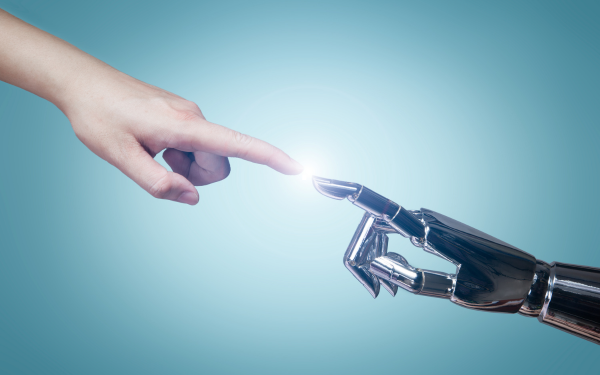Imagine a restaurant where service is unerringly swift and accurate, where nothing ever has to be taken off the menu because the kitchen has run out of ingredients, and where waiting staff have an uncanny knack of suggesting exactly the accompaniment or dish upgrade every customer wants.
Imagine further, if you will, what the bottom line of such a business would look like if waste was pared back to an absolute minimum, while the throughput of customers was at a consistently optimum level. High customer satisfaction, high sales volumes, high average order values, high levels of efficiency – it’s what every restaurant owner aspires to.
Achieving such lofty ambitions is getting a lot easier thanks to artificial intelligence (AI). Many restaurant owners may still be at an early stage of their journeys with AI, if they’ve gotten started at all. But the potential benefits AI offers are truly game-changing and well worth investigating.
To get you started, here’s our take on where AI could transform the future of your restaurant business.
Reducing costs and cutting waste
Few modern business owners need convincing of the enormous value and importance of data. AI’s ability to work with data at vast scales, to assimilate many different types of data at once (including types such as language, that were previously beyond the scope of conventional algorithms), and to refine outputs or ‘learn’ over time, is taking the possibilities of data analytics to brand new levels.
One area of enormous potential for the restaurant sector is predictive analytics, which involves analysing historical data in order to forecast future trends. Predictive algorithms use patterns in known data to determine likely future events based on the balance of probability. The more data you feed them, the more accurate they are. And as we’ve noted, AI is very good at working with huge volumes of data.
Improving forecasting for your restaurant business even by a modest amount can have a big impact on efficiency. Take waste, for example. Every restaurant loses money from food being thrown away. Running predictive AI software on top of your integrated POS and inventory management system can give you an in-depth breakdown of how often menu items are being ordered, how quickly ingredients are being used, and what the optimum purchasing patterns are for each to avoid waste. You could even see how consumption patterns change on different days of the week or with different seasons, and adjust both your menu and your inventory accordingly.
The same principle can be applied to table utilisation and staffing. If you have a good idea of what customer numbers will be like given variables like day of the week, time of year, time of day or even the weather, you can rota staff accordingly, avoiding the unnecessary costs of having more staff working than you need, or the inefficient service caused by having too few on shift.
And speaking of service efficiency, predictive analytics can also dive into details like food preparation times, average dining times and table booking schedules. Not only does this help increase time-to-table for food orders, it also means you can maximise customer throughput, serving more meals and therefore increasing revenues.
Giving customers what they want
Another side to AI’s revolutionary impact on data-driven intelligence is how it can help to transform customer experience. People like to be given exactly what they want in general, and it’s no different when it comes to dining out. AI brings that a step closer.
It starts with marketing and promotions. Offering, say, a 10% discount across the board is a pretty scattergun approach – some customers will jump at the chance, others won’t. What’s far more effective is targeting different promotions to different people – linking a discount to a particular dish someone is likely to be tempted by, or rolling out BOGOF deals to couples, or early bird promotions for families. By analysing customer data in close conjunction with sales and promotion uptake patterns, AI can help you make every hook you throw out that much more ‘sticky’, because it’s targeted to people at people who are most likely to be attracted by it.
AI can also help to boost average order value (AOV). We’ve seen in the QSR sector over the past decade the impact that giving customers time and space to customise their own orders at self-service ordering kiosks has on AOV. AI can build on this by informing personalised up-sell and cross-sell recommendations, either by making suggestions based on known customer preferences, or by revealing the most popular take-ups for any given dish from sales data.
If you’d like to explore AI’s role in the future of hospitality further, it’s a subject that features heavily in many of the keynote speeches at the Hospitality Tech Expo at ExCel London on October 15th and 16th.




